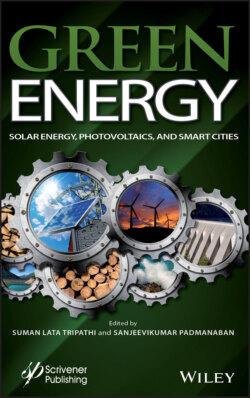Читать книгу Green Energy - Группа авторов - Страница 15
1.1.2 Introduction to Si Wafer
ОглавлениеSilicon is a member of group 14 in the periodic table and is tetravalent metalloid, semiconductor and brittle crystalline solid [10-12]. In 1906, a silicon radio crystal detector was developed as the first silicon-based semiconductor device by Greenleaf Whittier Pickard [13]. Russell Ohl discovered the nonlinear semiconductor devices, p-n junction, and photovoltaic effect in the metalloid Si in 1940 [14]. In 1941, during the Second World War, radar microwave detectors were invented by developing techniques for production of high quality germanium (Ge) and Si crystals [15]. William Shockley proposed a field-effect amplifier based on Ge and Si in 1947, but could not demonstrate the prototype practically [16]. John Bardeen and Walter Brattain built the first working device, point-contact transistor, in 1947 under the direction of Shockley only [17]. The first Si-based junction transistor was fabricated by the physical chemist Morris Tanenbaum in 1954 at Bell Labs [18]. At Bell Labs in 1954, Carl Frosch and Lincoln Derick found out by accident that it is possible to grow silicon-di-oxide (SiO2) on Si wafers [19]. Later on, in 1958, they discovered that this as-grown SiO2 could be used to mask Si surfaces during diffusion processes [19].
Si atom has fourteen electrons with electronic configuration 2,8,4 [1s2, 2s2, 2p6, 3s2, 3p2] specifying that the number of valence electrons is 4 [10,11]. These valence electrons occupy the 3s orbital and two 3p orbitals. In order to complete its octet and attain the stable noble gas configuration of Argon (Ar), it can combine with other elements to form SiX4 derivatives by forming sp3 hybrid orbitals. In this case, the central Si atom taking part in the bonding with other element shares an electron pair with each of the four atoms of the bonding element.
Si and Ge crystallize in a diamond-type cubic lattice structure which has the space-lattice of face-centered cubic (fcc) [20, 21]. The atomic positions in the diamond-type cubic lattice projected on a cubic platform are shown in Figure 1.3. In a space-lattice of fcc-type, two identical atoms at 000 and form the primitive basis and are associated with each point of the fcc lattice. In the above picturesque, fractions are the heights over and above the base in units of a cube edge. In that case, points at lie on the fcc lattice, while those at and lie on the similar fcc lattice but are displaced along the line of body diagonal by a magnitude of ¼ of its length. It is a known fact that the unit cube of fcc lattice consists of 4 lattice points. As a result, diamond-type cubic lattice contains 2 × 4 = 8 atoms. The diamond-type fcc lattice in Si displays tetrahedral bonding characteristics [20, 21].
Figure 1.3 Schematic to show atomic positions in diamond-type cubic lattice.
Si is tetravalent and can be made p-type by adding dopants of boron (B), aluminium (Al) & gallium (Ga), and addition of antimony (Sb), phosphorous (P) & arsenic (As) generates n-type semiconductor material [10,11,20,21]. B and Ga possess only three valence electrons and when they are mixed into the Si lattice, deficiency of an electron is created which is termed as positively charged “vacancy” or “hole”. Holes take part in conduction accepting an electron from the neighbour and transitioning over the atoms. For making Si an n-type semiconductor, Sb, P and As are added into the Si lattice in small quantities each having five valence electrons, which creates an extra electron into the lattice. The availability of these free electrons as a whole in the material creates a net flow of negatively charged carriers to constitute current. Thus, addition of small amounts of either of two types of foreign atoms changes Si crystal into a medium-type of conductor, which is a semiconductor. Joining of two types of semiconducting materials constitutes a device entailed as nonlinear semiconductor diode [10,11,20-22]. Figure 1.4 shows a similar picture to portray the doping of two types of foreign atoms in Si lattice.
